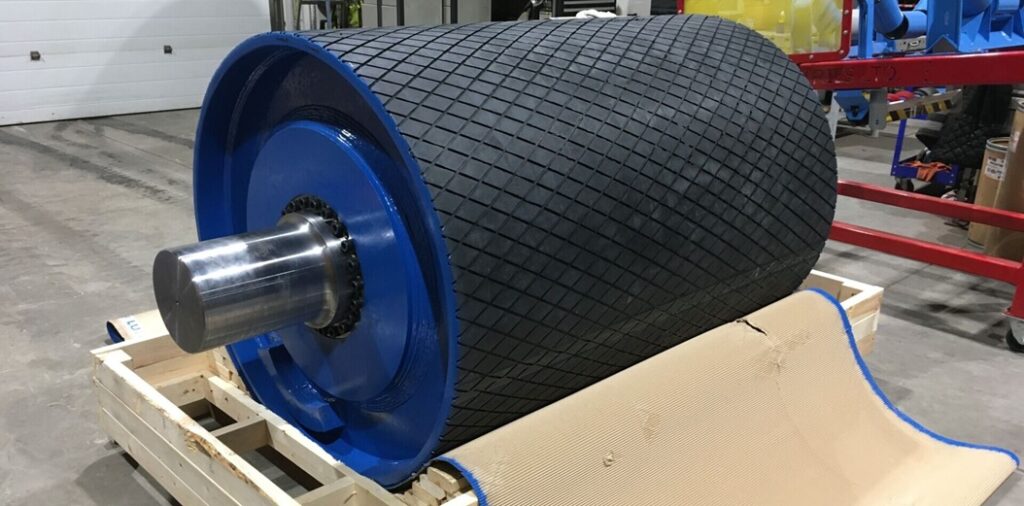Optimizing Efficiency: How Belt Pulley Systems Enhance Machinery Performance

In the realm of industrial machinery and mechanical systems, optimizing efficiency is critical for maximizing performance, reducing operational costs, and extending equipment lifespan. Among the various components that play a crucial role in achieving these objectives are belt pulley systems. These systems, integral to the operation of numerous machines and devices, enhance machinery performance through their ability to transmit power and manage motion effectively.
Understanding Belt Pulley Systems
Belt pulley systems are mechanical assemblies designed to transfer rotational motion and power between shafts. They consist of pulleys and belts that work in conjunction to achieve the desired motion and force transmission. Pulleys are wheel-like components with a groove around their circumference, while belts are flexible loops that wrap around these pulleys, creating a continuous loop.
The primary function of a belt pulley system is to facilitate the transfer of power from one rotating shaft to another. This is achieved by the rotation of the driving pulley, which, through the belt, transmits motion to the driven pulley. Belt pulley systems can be classified into various types, including flat belt, V-belt, and timing belt systems, each designed for specific applications and operational requirements.
Enhancing Machinery Efficiency
1. Power Transmission and Distribution
One of the primary advantages of belt pulley systems is their efficiency in power transmission and distribution. By using a belt to connect two or more pulleys, these systems can transmit power across different distances and between various components. This ability to distribute power evenly and efficiently is crucial in ensuring that machinery operates smoothly and with minimal energy loss.
In industrial settings, where machinery often requires the transmission of significant amounts of power, belt pulley systems can effectively manage this demand. They can handle varying loads and adapt to different operational speeds, making them versatile components in machinery performance optimization.
2. Reduced Friction and Wear
Belt pulley systems are designed to minimize friction and wear, which are common challenges in mechanical systems. Unlike gear systems, which can experience high levels of friction due to direct metal-to-metal contact, belt pulley systems use flexible belts that reduce friction between moving parts.
The reduction in friction not only improves the efficiency of power transmission but also decreases the wear and tear on components. This results in lower maintenance requirements and longer operational lifespans for both the belts and pulleys. By minimizing the impact of friction and wear, belt pulley systems contribute to overall machinery performance and reliability.

3. Noise and Vibration Reduction
Another significant benefit of belt pulley systems is their ability to reduce noise and vibration. The smooth, continuous motion provided by the belt helps dampen vibrations and reduce noise levels, which can be especially advantageous in environments where noise reduction is essential.
In comparison to gear-driven systems, which can produce significant noise and vibration due to the meshing of gears, belt pulley systems offer a quieter and smoother operation. This not only enhances the working environment but also contributes to the longevity of the machinery by reducing the impact of vibrations on sensitive components.
4. Flexibility and Adjustability
Belt pulley systems offer considerable flexibility and adjustability in machinery design. The ability to easily change belt lengths, pulley sizes, and belt types allows for customization based on specific operational requirements. This adaptability makes belt pulley systems ideal for applications where variable speeds and torque are necessary.
Moreover, the simplicity of adjusting belt tension and pulley alignment facilitates maintenance and troubleshooting. Operators can make adjustments without extensive disassembly or reconfiguration, ensuring that machinery remains operational and efficient.
Applications and Industry Impact
Belt pulley systems are utilized in a wide range of industries and applications, including automotive, manufacturing, agriculture, and HVAC systems. Their ability to enhance machinery performance makes them indispensable in various settings. For example, in automotive engines, belt pulley systems drive accessories such as alternators and water pumps, ensuring efficient operation and reliability.
In manufacturing, belt pulley systems are employed in conveyor systems, production lines, and machinery that require synchronized movement. Their efficiency in power transmission and reduced maintenance needs contribute to increased productivity and lower operational costs.
Conclusion
Belt pulley systems play a pivotal role in optimizing machinery performance by enhancing power transmission, reducing friction and wear, minimizing noise and vibration, and providing flexibility in design. Their ability to efficiently manage power and motion makes them a valuable component in various industrial applications. As technology advances and machinery becomes increasingly complex, belt pulley systems will continue to be essential in achieving optimal efficiency and performance in mechanical systems.
By leveraging the benefits of belt pulley systems, industries can improve their operational efficiency, reduce maintenance costs, and ensure the reliable performance of their machinery.







